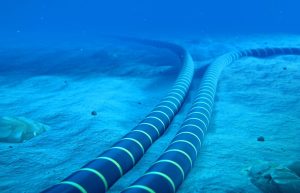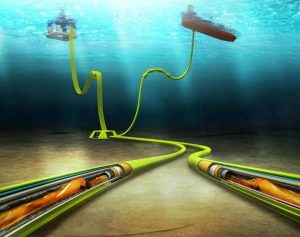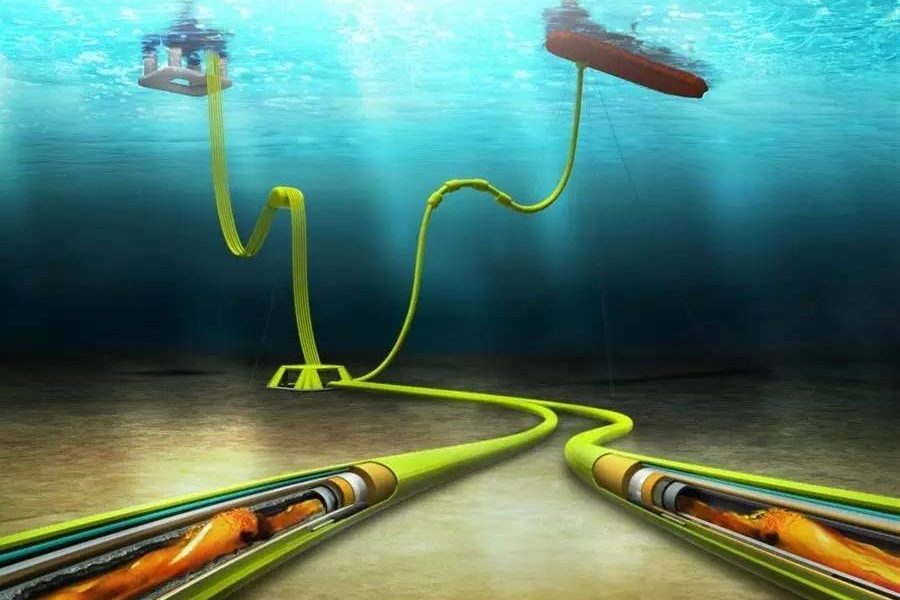Underwater fiber optic cable once damaged repair, how difficult you understand? Cutting the fiber optic cable if the water will cause secondary damage?
Underwater Fiber Optic Cable Internal Basic Structure
The outer layer of underwater fiber optic cable is polyethylene layer, aluminum waterproof layer, polycarbonate layer, copper or aluminum tube, paraffin wax, fiber optic bundles and other structures, and the internal metal wire guide structure.
Submarine fiber optic cable systems are mainly used to connect fiber optic cables and networks.
Deep-sea fiber optic cable compared to the structure of the land cable is more complex, the metal wire placed in the U-shaped groove plastic skeleton plays a role in fixing the internal filled with ointment filler to form a complete fiber core.
It is surrounded by high-strength steel wire wrapped around the outer gap filled with waterproof material.
Steel wire around a layer of copper tape wrapped around the formation of a pressure and tensile joint, and finally add a layer of polyethylene protective layer.
All of this is to protect the optical fiber to prevent breakage, prevent seawater intrusion on the cable caused by corrosion.

See here is not found underwater submarine cable core is like wearing many layers of protective armor, placed on the seabed will be invincible existence.
Submarine fiber optic cables are like a huge World Wide Web connecting countries all over the world, and trillions of dollars of financial transactions every day rely on them to transmit.
Damage to Submarine Fiber Optic Cables
Undersea fiber optic cables are supposedly manufactured and constructed with the best materials to ensure that they are built to last forever.
Komabe, most undersea cables are placed in areas where there are various types of marine animals, in their eyes the thick tube is just a toy.
Like a shark with a mouth full of sharp teeth, in its eyes, it feels that the fiber optic cable is its food.
A bite down on the black cable tube will cause a rupture in the seawater invasion of the fiber optic cable will be corroded in a short period, resulting in communication instability or interruption.
Attached to other small marine animals can also cause damage to the fiber optic cable to varying degrees.
In addition to marine animals, trawlers and anchored vessels can pose a threat to submarine fiber optic cables.
If the damage point is in a high mountainous or gully area under the sea, it is difficult to haul it ashore or use a cable repair vessel to repair it.
Choncho, the maintenance and repair of underwater fiber optic cables has become a high-level technical work, and its steps are quite scientific and technological.
Damage Repair of Underwater Fiber Optic Cable
Repairing damage to underwater fiber optic cables requires first determining the approximate location of the damage by transmitting signals from both ends of the cable, then sending diving equipment to pinpoint the location, and then sending a repair vessel to the designated area.
Firstly, the repair team should drive the cable repair vessel to locate the damaged area of the cable, and then a special underwater fiber optic cable repair warehouse will be released to form a platform on the seabed.
The damaged cable will be wrapped in the chamber, which is the same as submarine cable pipeline construction and repair construction.
Next, the chamber is drained to create a dry space, but the repair work still needs to be done manually.
Traditional old submarine pipeline repair warehouse space is relatively narrow, requiring workers to master bare hands into the warehouse repair.
Submarine Fiber Optic Cable Underwater Dark Repair Method
This repair method is not afraid to bring seawater into the pipeline.
Clever engineers have come up with a good idea for this, which is to build a submarine repair warehouse with a pair of repair gloves, and the warehouse outside the visible transparent window as well as pressure, and humidity detection devices.
Not only not afraid of the intrusion of seawater, but can also closely observe the state of repair of fiber optic cables, as well as fiber optic cables in the vicinity of the environment.
This equipment is called the underwater dark repair method.

Kuphatikiza apo, if the necessary repair work occurs and the damaged cable is located below 2,000 meters underwater, the damaged portion can only be towed to the top of the cable repair vessel for repair.
After locating the damaged portion of the cable, engineers use special remote-controlled submersible gripping equipment to position the cable into the towing rope.
Subsequently, the cable repair ship cranes will be towed to the deck for surface repair work, to be completed after the cable repair engineers use a special water jet trenching machine will be buried back to the seabed two meters deep in the seabed.
The submarine cable repair process is extremely complex, and the cost of maintenance consumption is not low, compared with the value of a cable itself is considered to be a drop in the bucket.
Underwater Submarine Cables and How to Lay Them
Choyamba, the beginning of the project will be fixed on the shore at one end of the fiber optic cable, laying the ship slowly away from the coast to the outer sea to start. This process is very slow because the fiber optic cable in the laying process with external forces compared to appears very fragile.
When one side of the fiber optic cables and cables are sunk to the bottom of the sea, the excavator, which is sunk to the bottom of the sea in advance, is used to lay them.
The laying process is, respectively, a laying ship (fiber optic cable ship), and a submarine excavator.
The first point, the erection of trans-oceanic fiber optic cable requires the use of a fiber optic cable ship, the construction of a whole roll of fiber optic cable needs to be fixed on board. Nowadays, the more advanced fiber optic cable laying ship can carry two thousand kilometers of fiber optic cable and lay it at a speed of two hundred kilometers per day.
Before laying the cable, the engineering team will clean the area where the cable will pass through, mainly clearing away nets, fishing gear, large metal residues, ndi zina. The cable will then be laid on board the vessel.
Ditch-digging equipment to start is a submarine fiber optic cable laying pioneer, cable laying distance depends entirely on the number of ditch-digging equipment ditch forward distance.
Fiber Optic Cable Laying Step 2
Submarine cable laying ship is another part of the trenching equipment, its work is basically on the coast at the beginning of the trench until the deep sea, for the fiber optic cable, it is the fiber optic cable seeding machine.
Submarine trenching equipment in the deep sea will be guided forward by the ship, the seabed work is the use of a high-pressure water column to wash away the seabed sediment to realize the 2 ku 3 meters or so of the trench to place the fiber optic cable (fiber optic cable placed in the trench). Simply put, the work of the cable-laying ship is putting cable, and submarine digging equipment is laying cable. Transoceanic fiber optic cables are thicker and less resilient, and the forward speed of the laying ship is strictly controlled by the commanding and guiding ship.
The above is about underwater cable maintenance repair and laying of some information, in the use of some cables and cables, ZMS has absolute professional experience, welcome to consult.
